Letter in Albert Lea Tribune re: Freeborn Wind Farm
December 16th, 2017
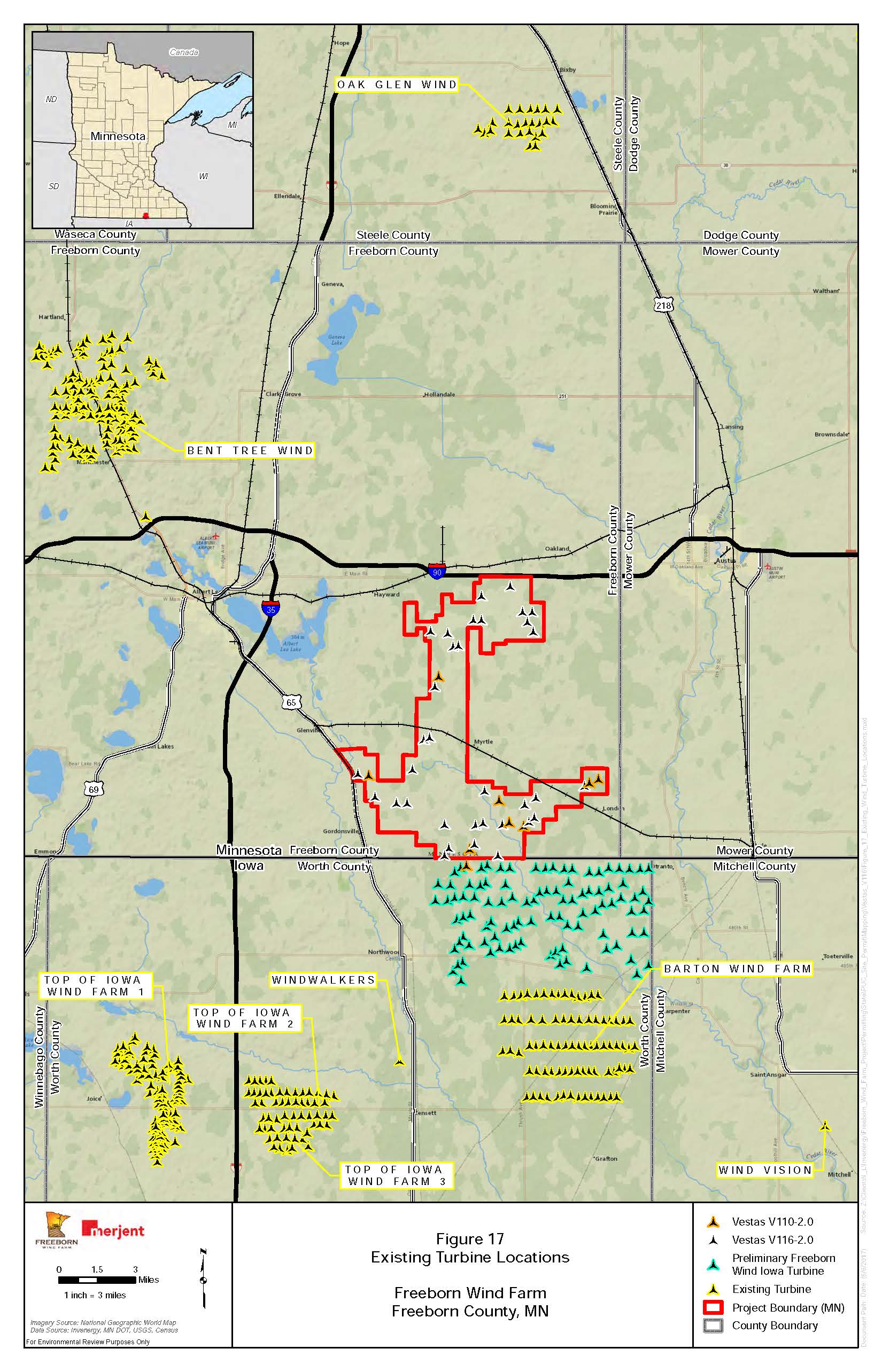
On Tuesday, Commerce is having a wind project transmission scoping meeting (MPUC Docket 17-322):
6 p.m. on December 19, 2017
Room 124
Riverland Community College
Albert Lea, MN
The Albert Lea Tribune printed my Letter to the Editor about the Freeborn Wind Farm transmission scoping meeting:
Letter: Meeting on new wind farm is planned next week
At 6 p.m. Dec. 19 in Room 124 at Riverland Community College, the Minnesota Department of Commerce is holding a public comment and scoping meeting for the transmission line designed to serve the Freeborn Wind project. This is the opportunity for you to raise any questions and concerns about what issues should be investigated and reviewed in the Department of Commerce’s environmental review. This includes all of the things you know about the area, and any alternatives that should be in the mix.
Minnesota has a policy of non-proliferation of transmission corridors, which means that as a matter of law, transmission should be routed using existing corridors, such as transmission lines already in place or road right of way. This line, instead, is proposed to traverse cross country. That’s not non-proliferation.
Another problem is that Freeborn Wind developers claim they have land rights to all land needed for this transmission line, and then state that they’ll use eminent domain if they don’t. Well, which is it? And it’s troubling, because only public service corporations have the power of eminent domain, but Freeborn is a LLC, not a public service corporation. To make things more complicated, need has not been demonstrated, and there is no certificate of need. Need is a requirement for use of eminent domain. What’s their basis for saying they can use eminent domain?
This is yet another overreach by the developers — more infrastructure, which would forever change the landscape of this community. Dec. 19 at Riverland College — now is the time to speak up!
Carol A. Overland
Attorney for Association of Freeborn County Landowners
FAKE NEWS again from CAE
December 15th, 2017

They’re recycling, and not in a good way. Why is the STrib facilitating this? Remember this from October?
Center of the American Experiment – Conflatulence!!
Here we go again, this time in the STrib:
The two primary false arguments:
1) Wind is driving up ratepayer cost (it’s not, it’s the return on capital expenditures).
2) Clean Power Plan and renewable mandates aren’t lowering CO2 and are driving up rates (CPP and mandates only increase “renewables” and don’t cut CO2 production, it’s a percentage change, and using least cost generation. Only reduction in burning will lower production of CO2).
3) High cost of electricity in Minnesota is connected to wind policies (When compared historically higher cost states like Illinois, yes, Minnesota’s rates are high, but it isn’t related to wind costs, wind is a least cost resource. It IS related to the shift of electricity from serving a franchise area to a market based system, and the market has spoken. When electricity can be sold for more, and where utilities have transmission build-out from any Point A to any Point B, they will sell to highest bidder. Higher priced markets will line up to buy our lower cost electricity and utilities will line up to sell it elsewhere rather than sell it for less to us, and we will have to pay the higher price to get electricity here. That’s how a market works, Econ 1001. With wholesale market deregulated, and transmission lines built, we’ve got defacto deregulation.).
And a minor but very obvious false statement:
And the shortfall in summer wind production is being backstopped primarily by coal-fired electricity.
Coal runs constantly, as does nuclear, well almost, capacity factor of 80+. But it’s natural gas, with its near-immediate ramping up that backs up wind, if generation is needed. DOH! Coal can’t get it up on command.
Why is the STrib printing this crap that is so patently false?
Here’s a good wallpaper to keep running, the MISO LMP map.
Check MISO’s real time LMP prices HERE!
See how Chicago area is cut out? That’s because it’s in PJM.
Check PJM’s real time LMP prices HERE!
Freeborn’s MISO info for J407
December 15th, 2017

Here’s what I’ve been able to find about MISO J407, the number provided by Xcel Energy in their 16-777 Resource Acquisition docket that included the Freeborn Wind project:
And from Xcel’s Petition on interconnection (click for larger version):

And here’s what I could find from MISO:
miso-february-2015-initial-posting
20170117 IPTF Item 01f DPP Updates
There ya have it!
PPSA Annual Hearing – December 22
November 20th, 2017
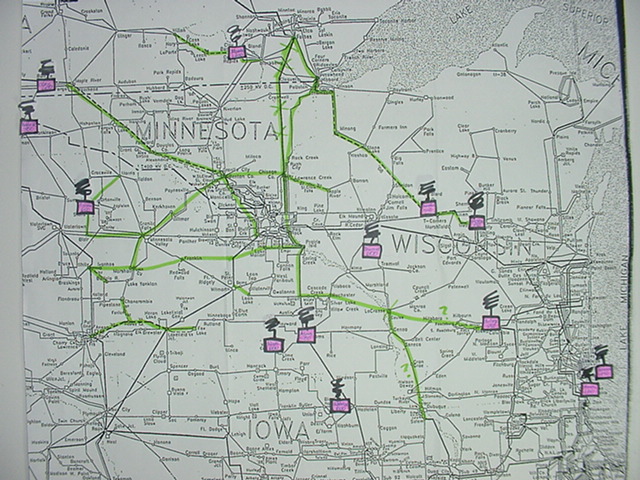
Ah, yes, it’s that time of year again… remember this map, way back when, connecting existing coal plants to the proposed CapX 2020 system? (note the Mid-American coal plant built in 2007 over by Council Bluffs isn’t there, it’s at the green lines on the southwest side where transmission starts.)
It’s the Power Plant Siting Act Annual Hearing!
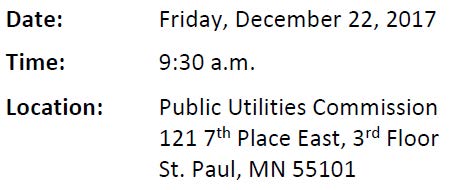
Here’s the full notice:
2017_Docket 17-18_Notice_201711-137509-01
And going back in history:
2006 Report to PUC – Docket 06-1733
2007 Report to PUC – Docket 07-1579
2008 Report to PUC – Docket 08-1426
2009 Report to PUC – Docket 09-1351
2010 Report to PUC – Docket 10-222
2011 Report to PUC – Docket 11-324
2012 Report to PUC – Docket 12-360
2013 Report to PUC – Docket 13-965
2014 Summary Report– Docket 14-887
2015 Summary Report – Docket 15-785
2016 Summary Report — Docket 16-18
Here’s the summary of what I had to say last year, from the report above:

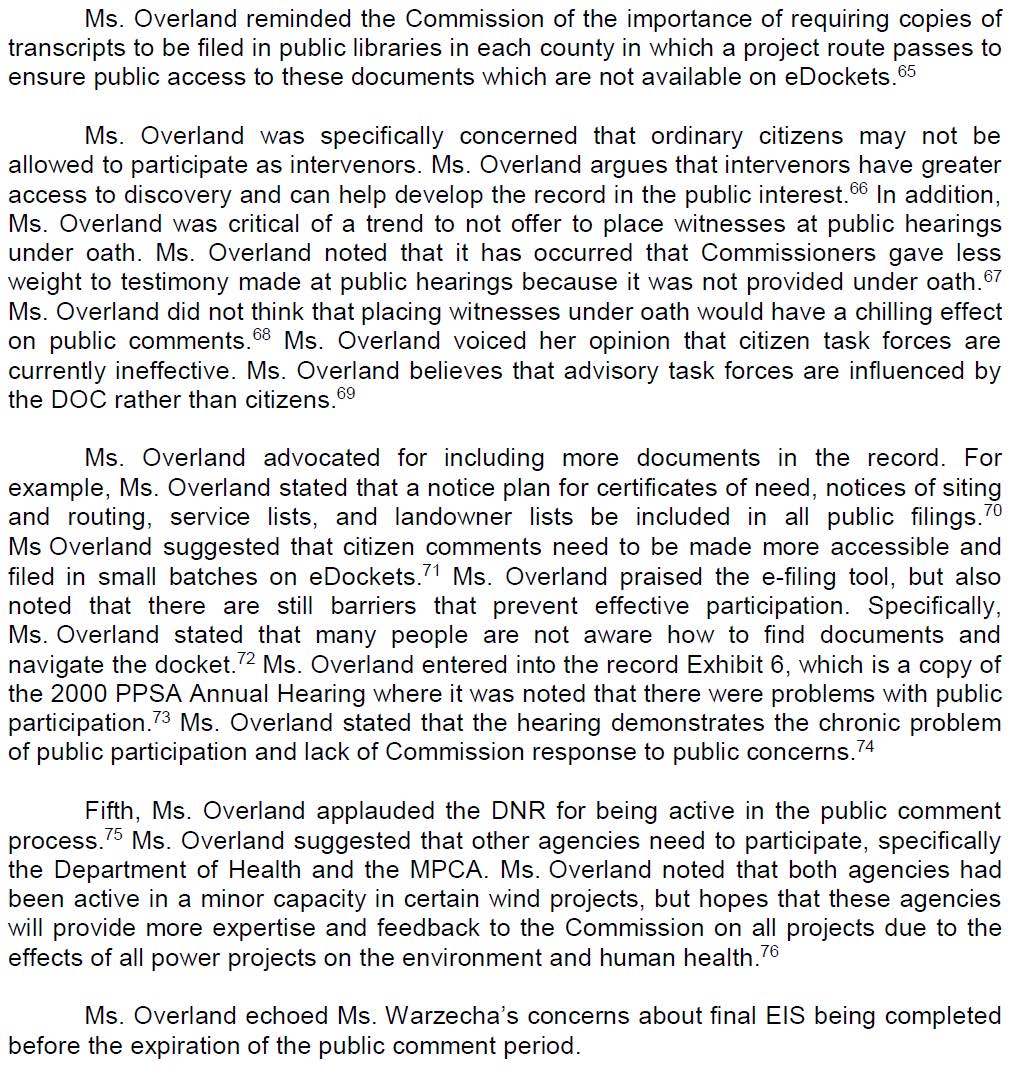

Does this sound familiar?
Meanwhile, we’re still waiting on the rulemaking, 12-1246, which addresses PPSA siting rules, Minn. R. Ch. 7850. To see rulemaking docket, which ostensibly is to address the changes in the 2005 Transmission Omnibus Bill from Hell, go HERE and look up rulemaking docket 12-1246.
I expect this rulemaking to reach the Public Utilities Commission before I drop dead. But I’m starting to wonder. The “12” in “12-1246” means the docket was opened in 2012. This is 2017, almost 2018. Good grief!

HERC at PUC on Thursday
November 13th, 2017
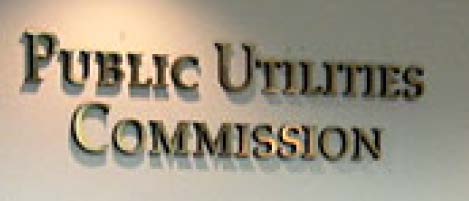
This Thursday, the Xcel Energy Petition to slash the Hennepin Energy Recovery Center Power Purchase Agreement. It’s a pretty twisted thing…
Read all about it — check out the Public Utilities Commission docket:
Click “Search Documents” HERE and search for docket 17-532
Here are the Staff Briefing Papers_201711-137262-01
For example, Commerce noted that the power wasn’t needed:
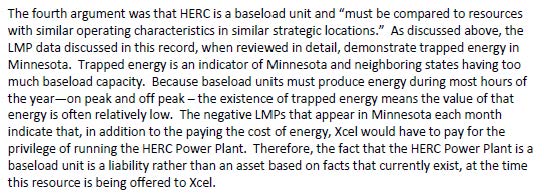
And the PUC staff seems to have heard this, which notes the capacity surplus in the Briefing Papers above:

Followed by this:
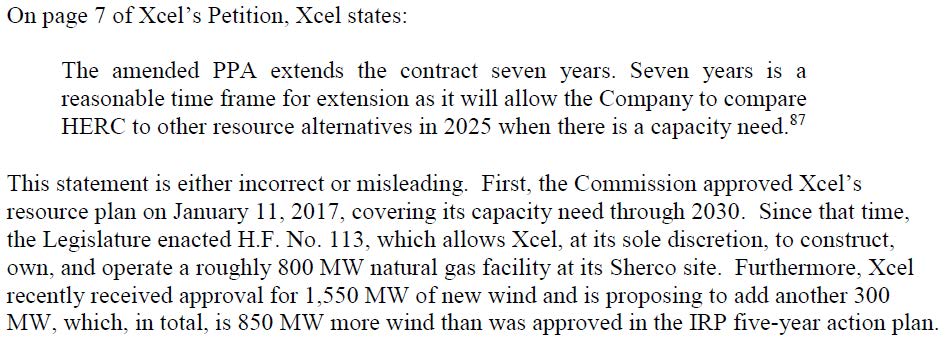
Ummmmmmmm, it’s both!

And it gets curiouser and curiouser… Again from the Briefing Papers:
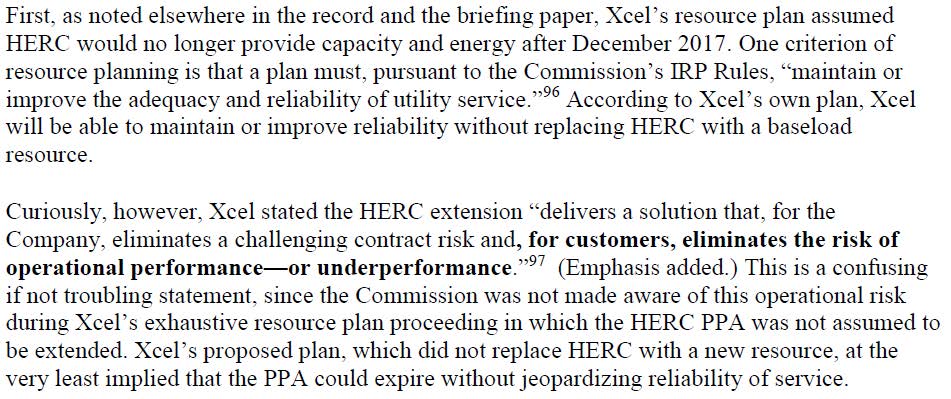
And some validation of concerns raised:
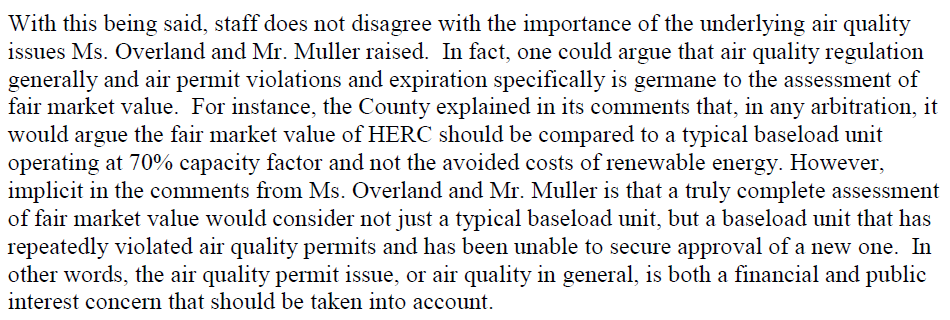
So what will the Commission do? It seems their knickers are in a bunch and it’s not at all clear…
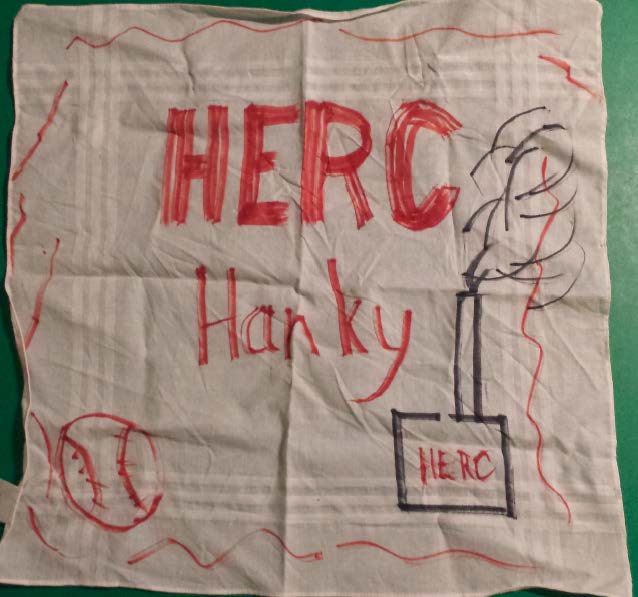
Here’s the Neighbors for Clean Air page for HERC:
And check out Alan Muller’s powerpoint from the successful challenge to attempt to increase garbage burning:
There was an announcement in April, 2016, of the “HERC Clean Power Plan Coalition” with multiple groups joining to shut down HERC! Sierra Club North Star Chapter, MPIRG, Neighborhoods Organizing for Change, Community Power, St. Joan of Arc, etc.
HERC? SHUT IT DOWN!